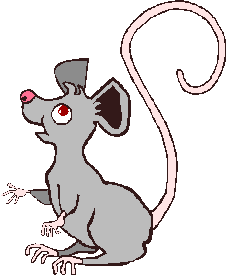 |
|
 |
|
| The
Secondary Market |
| |
 The first retirement came about almost
accidentally when David himself decided that some of his early work no longer
reflect the skill he was able to achieve some three or four years after he
first started. It was simply thought best if these earlier pieces were dropped
from the range and concentrate on the better finished and more precisely
detailed cottages. Also the earlier moulds were not very robust and would
quickly perish so losing their fine detail. The first retirement came about almost
accidentally when David himself decided that some of his early work no longer
reflect the skill he was able to achieve some three or four years after he
first started. It was simply thought best if these earlier pieces were dropped
from the range and concentrate on the better finished and more precisely
detailed cottages. Also the earlier moulds were not very robust and would
quickly perish so losing their fine detail.
 Once a piece is no longer made the secondary
market takes over and the price paid privately from one collector to another
increases depending on how much that particular piece is wanted. During the
late 1980's the secondary market for some pieces rocketed as the American
market took off. American collectors suddenly realised that many pieces had
been made and retired long before they were given the opportunity to collect
them and so many retired cottages were being exchanged for very high prices and
there were a few which reached amounts that can only be described as silly. But
as there were a few who literally had 'money to burn' these cottages were still
changing hands at high prices and so the secondary prices increased depending
on the demand. Once a piece is no longer made the secondary
market takes over and the price paid privately from one collector to another
increases depending on how much that particular piece is wanted. During the
late 1980's the secondary market for some pieces rocketed as the American
market took off. American collectors suddenly realised that many pieces had
been made and retired long before they were given the opportunity to collect
them and so many retired cottages were being exchanged for very high prices and
there were a few which reached amounts that can only be described as silly. But
as there were a few who literally had 'money to burn' these cottages were still
changing hands at high prices and so the secondary prices increased depending
on the demand.
 The popularity of a piece depended on a number of
things. Some of the earlier pieces had very short production runs like the
original Mill House and Little Mill, which were sculpted and
retired within 1980 and as there was barely a handful of people making them
very few must exist. Three Ducks Inn, St. Paul's Cathedral and
Chichester Cross were also available for barely more than a year. The
four Provencals, Castle Keep, Double Oast and Sabrina's
Cottage were listed only between 1981 and 1982 and did not sell very well,
and as John Hine would have concentrated his limited resources on producing
pieces that were popular, these pieces were only produced when ordered. The popularity of a piece depended on a number of
things. Some of the earlier pieces had very short production runs like the
original Mill House and Little Mill, which were sculpted and
retired within 1980 and as there was barely a handful of people making them
very few must exist. Three Ducks Inn, St. Paul's Cathedral and
Chichester Cross were also available for barely more than a year. The
four Provencals, Castle Keep, Double Oast and Sabrina's
Cottage were listed only between 1981 and 1982 and did not sell very well,
and as John Hine would have concentrated his limited resources on producing
pieces that were popular, these pieces were only produced when ordered.
 The Studios and Workshops of John Hine Limited did nothing
whatsoever to manipulate the secondary market. They kept on selling the pieces
after their retirement was announced until there were none left. The only
exception to this rule were the numbered Limited Edition pieces. The Studios
and Workshops of John Hine Limited were totally flabbergasted when the
secondary market started trading in their retired pieces and no one foresaw how
much demand there would be for these pieces and the values that they would
attract. The Studios and Workshops of John Hine Limited did nothing
whatsoever to manipulate the secondary market. They kept on selling the pieces
after their retirement was announced until there were none left. The only
exception to this rule were the numbered Limited Edition pieces. The Studios
and Workshops of John Hine Limited were totally flabbergasted when the
secondary market started trading in their retired pieces and no one foresaw how
much demand there would be for these pieces and the values that they would
attract. |
|
|
|
|
 |
|
 |
|
|



